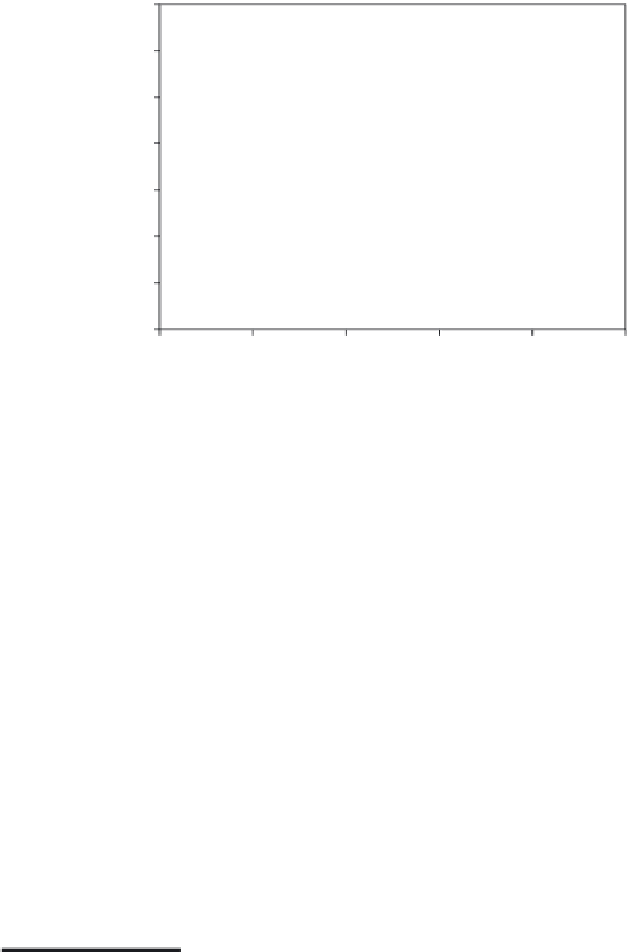Biomedical Engineering Reference
In-Depth Information
0.1
0
-0.1
-0.2
-0.3
-0.4
R
S
-0.5
-0.6
-1
-0.5
0 0.5
Intensity at 484 cm
-1
1
1.5
Figure 6.4
The effectiveness of I484/I437 for distinguishing cell types.
ratio Classifier
While the PLS-DA classifier works very well, the quantitative analysis section
of this research work suggests that a classifier using a wavenumber ratio
could also work well. As a result, it was decided to focus on single peaks and
their ratios. This was aimed at investigating the effectiveness of presenting
the spectra in the form of numbers and mathematical diagnosis of the avail-
able spectral information. In this case, in contrast to what was done in the
previous part, all twelve pairs of spectra were analysed and the ratio between
the bands at 437 and 484 cm
−1
was chosen (Figures 6.1 and 6.2).
Figure 6.4 illustrates a 2D plot of the resultant information showing similar
findings to those of spectral (Figures 6.1 and 6.2) and quantitative investigations.
R and S samples are clearly positioned separately. This result is in complete
agreement with the other findings of this research that were reported previ-
ously, as R spectra are spread in a wider area in comparison with S spectra.
Treated Cell Lines
In this section, spectra of human ovarian A2780-R and S samples, which
were treated with different concentrations of cisplatin, were collected and
analysed. Samples were prepared in a manner similar to that used in the
previous part of this research. However, they were treated with a chemother-
apeutic medication (Cis-diamminedichloroplatinum, CDDP) for 24 hours




















Search WWH ::

Custom Search